
Vacuum Furnace
Vacuum Heat Treat Sintering Furnace with Pressure for Vacuum Sintering
Item Number : KT-VPS
Price varies based on specs and customizations
- Maximum temperature
- 2100℃
- Pressure range
- 10-800T
- Vacuum degree
- 6×10-3Pa
Shipping:
Contact us to get shipping details Enjoy On-time Dispatch Guarantee.
Why Choose Us
Reliable PartnerEasy ordering process, quality products, and dedicated support for your business success.
Advanced Vacuum Pressure Sintering Furnace by KINTEK
The KINTEK Vacuum Pressure Sintering Furnace is a state-of-the-art high-temperature, high-pressure, and low-pressure sintering device. It's engineered for preparing high-performance ceramics, metals, and composite materials by sintering powder or lump material under precisely controlled high temperature, vacuum, or inert gas environments. This promotes material reorganization and recrystallization, forming dense structures with excellent performance while preventing oxidation and pollution to ensure superior material quality.
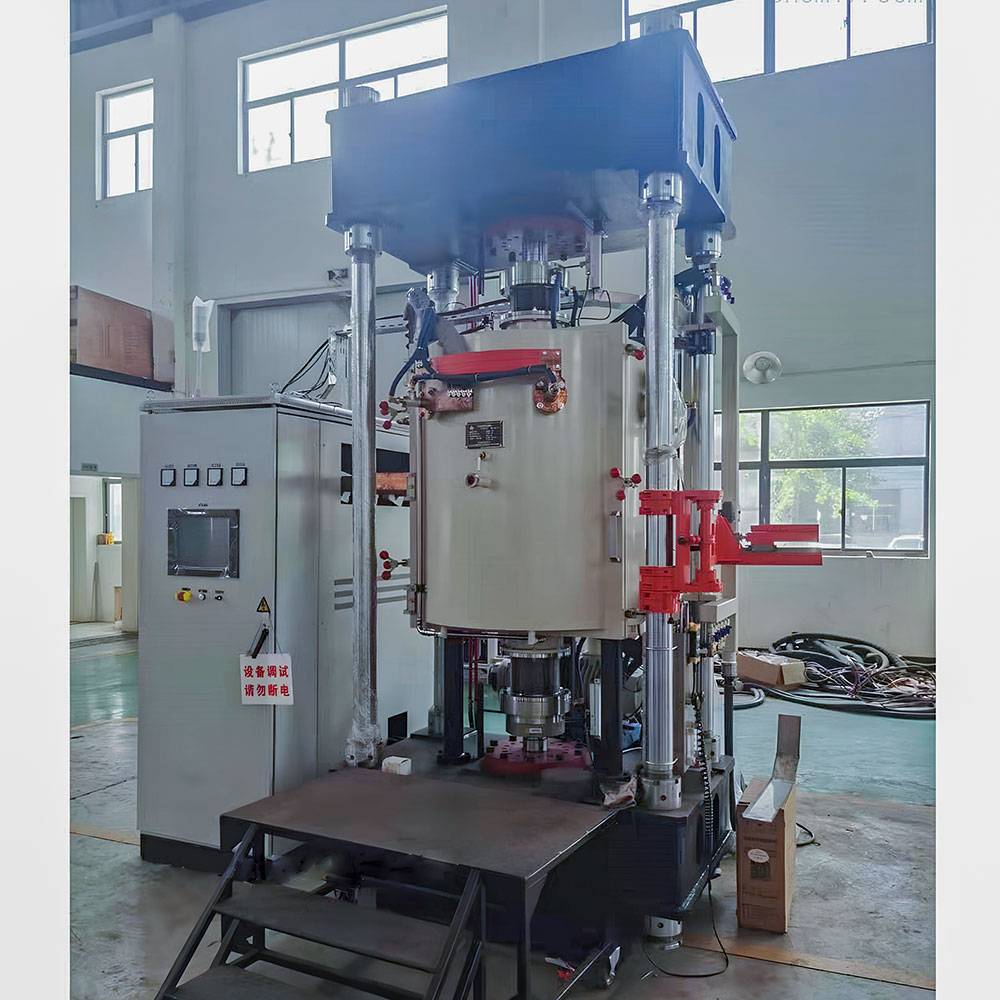
Key Technical Specifications
| Maximum temperature | 2100℃ |
| Pressure range | 10-800T |
| Heating method | Graphite |
| Vacuum degree | 6×10-3Pa |
| Effective workspace | Customizable |
Why KINTEK? Your Partner in Advanced Furnace Solutions
Leveraging exceptional R&D and in-house manufacturing, KINTEK provides diverse laboratories with advanced high-temperature furnace solutions. Our product line, including Muffle, Tube, Rotary Furnaces, Vacuum & Atmosphere Furnaces, and CVD/PECVD/MPCVD Systems, is a testament to our expertise. We pride ourselves on our strong deep customization capability, ensuring this Vacuum Pressure Sintering Furnace can be precisely tailored to meet your unique experimental requirements.
Features & Advantages: Delivering Quality and Performance
- Superior Sintering Quality: Operates in a vacuum or protective atmosphere to inhibit oxidation and contamination, ensuring high-purity, high-quality sintered materials.
- Versatile Material Processing: Accommodates a wide range of materials, including metal powders, inorganic non-metallic materials, and nanopowders, offering flexibility for diverse research and production needs.
- Precise Process Control: Advanced PLC and temperature transmitter ensure accurate temperature regulation for reliable and repeatable sintering processes.
- Enhanced Material Properties: Pressure sintering capability enhances mechanical properties, producing denser and stronger ceramic parts (e.g., SiC, Si3N4) and hard alloys.
- User-Friendly Design: Features quick-connect electrical connections for easy installation and relocation. The standard-made electric control cabinet simplifies operation and maintenance.
- Reliable and Safe Operation: Imported pressure regulators ensure stable pressurization. Comprehensive safety features, including classified sound and light alarms and Omron or Schneider electrical components, guarantee secure operation.
- Reduced Contamination & Bright Parts: Vacuum environment minimizes impurities, leading to consistent, bright parts without issues like decarburization or oxidation.
- Efficient and Productive: Offers quick turnaround times and is designed for easy maintenance, maximizing productivity for both R&D and high-volume production.
Wide Range of Applications
Our Vacuum Pressure Sintering Furnace is ideal for:
- Vacuum sintering: Densification of metal powders, inorganic non-metallic materials, and high-temperature materials, preventing deformation and grain coarsening.
- Pressure sintering: Enhancing mechanical properties of materials like SiC and Si3N4 ceramics.
- Hard alloy sintering: Creating wear-resistant cutting tools from tungsten carbide and other hard alloys.
- Ceramic materials sintering: Achieving high purity, density, and specific electrical conductivity in advanced ceramics.
- Carbon material processing: Including carbon fiber graphitization and sintering of carbon/carbon composites for improved electrical/thermal conductivity and stability.
- Silicon carbide products sintering: Producing high-strength, wear-resistant, and chemically inert SiC components.
- Photoelectric coating materials sintering: For high-efficiency solar cells and optoelectronic devices.
- Refractory metals sintering: Processing tungsten, molybdenum, and tungsten-copper alloys for high-temperature applications.
- Alloy materials sintering: Achieving specific properties like corrosion resistance and high strength in various alloys.
Operating Principle
The vacuum pressure sintering furnace sinters powder or lump material under high temperature, in a vacuum or inert gas. Through processes like high-temperature diffusion, thermal cracking, and chemical reactions, the material undergoes microscopic reorganization and recrystallization. This forms a dense structure with excellent performance, crucially avoiding oxidation and contamination.
Customize Your Furnace Solution & Get in Touch
At KINTEK, we understand that every experiment and production process has unique demands. That's why our Vacuum Pressure Sintering Furnaces are highly customizable. Discuss your specific requirements with our experts, and let us tailor a solution that perfectly fits your needs.
Ready to enhance your material processing capabilities? Contact us today via our Contact Form to get a personalized quote or learn more!
FAQ
What Are The Main Applications Of A Vacuum Furnace?
What Is An Atmosphere Furnace Used For?
What Is A Dental Furnace Used For?
What Is The Principle Of A Hot Press Furnace?
What Is A Vacuum Induction Furnace?
What Are The Main Applications Of A Horizontal Vacuum Furnace?
What Are The Key Features Of A Vacuum Furnace?
What Are The Key Features Of An Atmosphere Furnace?
What Are The Key Features Of A Dental Furnace?
What Are The Applications Of A Hot Press Furnace?
What Are The Main Applications Of Vacuum Induction Furnaces?
What Are The Key Features Of A Horizontal Vacuum Furnace?
How Does A Vacuum Furnace Work?
How Does An Atmosphere Furnace Work?
How Does A Dental Furnace Work?
What Are The Features Of A Hot Press Furnace?
How Does A Vacuum Induction Furnace Work?
How Does A Horizontal Vacuum Furnace Work?
What Are The Advantages Of Using A Vacuum Furnace?
What Are The Advantages Of Using An Atmosphere Furnace?
What Are The Advantages Of Using A Dental Furnace?
Why Is A Vacuum Environment Used In Hot Press Furnaces?
What Are The Advantages Of Using A Vacuum Induction Furnace?
What Are The Advantages Of Using A Horizontal Vacuum Furnace?
What Types Of Materials Can Be Processed In A Vacuum Furnace?
What Types Of Gases Can Be Used In An Atmosphere Furnace?
What Safety Features Should A Dental Furnace Have?
What Materials Are Commonly Processed In Hot Press Furnaces?
What Types Of Vacuum Induction Furnaces Are Available?
What Types Of Materials Can Be Processed In A Horizontal Vacuum Furnace?
What Is The Difference Between Hot Wall And Cold Wall Vacuum Furnaces?
What Safety Features Are Available In Advanced Atmosphere Furnaces?
What Types Of Dental Furnaces Are Available?
Why Is Temperature Control Important In Vacuum Induction Furnaces?
What Is The Temperature Range Of A Horizontal Vacuum Furnace?
Can Vacuum Furnaces Be Customized For Specific Applications?
What Materials Can Be Processed In A Vacuum Induction Furnace?
How Does The Vacuum Environment Benefit Material Processing?
4.8
out of
5
Incredible precision and durability—exactly what our lab needed!
4.9
out of
5
Top-notch technology at a fair price. Delivered faster than expected!
4.7
out of
5
The furnace’s performance is unmatched. Worth every penny!
4.9
out of
5
A game-changer for our production line. Highly recommend!
4.8
out of
5
Reliable and efficient—perfect for high-volume sintering.
4.9
out of
5
Exceptional build quality and advanced features. Impressive!
4.7
out of
5
Fast delivery and easy setup. The furnace works flawlessly.
4.8
out of
5
Superior heat treatment results. Our team is thrilled!
4.9
out of
5
Cutting-edge technology with outstanding consistency.
4.7
out of
5
Great value for money. Exceeded our expectations!
4.9
out of
5
Precision engineering at its finest. A must-have for serious work.
REQUEST A QUOTE
Our professional team will reply to you within one business day. Please feel free to contact us!
Related Products

600T Vacuum Induction Hot Press Vacuum Heat Treat and Sintering Furnace
600T Vacuum Induction Hot Press Furnace for precise sintering. Advanced 600T pressure, 2200°C heating, vacuum/atmosphere control. Ideal for research & production.
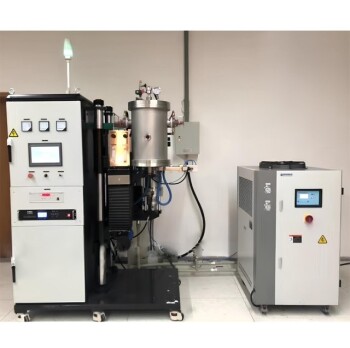
Vacuum Heat Treat Sintering Furnace Molybdenum Wire Vacuum Sintering Furnace
KINTEK's Vacuum Molybdenum Wire Sintering Furnace excels in high-temperature, high-vacuum processes for sintering, annealing, and material research. Achieve precise 1700°C heating with uniform results. Custom solutions available.

Small Vacuum Heat Treat and Tungsten Wire Sintering Furnace
Compact vacuum tungsten wire sintering furnace for labs. Precise, mobile design with superior vacuum integrity. Ideal for advanced material research. Contact us!

9MPa Air Pressure Vacuum Heat Treat and Sintering Furnace
Achieve superior ceramic densification with KINTEK's advanced air pressure sintering furnace. High-pressure up to 9MPa, precise 2200℃ control.

Vacuum Heat Treat Sintering and Brazing Furnace
KINTEK Vacuum Brazing Furnaces deliver precision, clean joints with superior temperature control. Customizable for diverse metals, ideal for aerospace, medical, and thermal applications. Get a quote!

Vacuum Heat Treat Furnace with Ceramic Fiber Liner
KINTEK's Vacuum Furnace with Ceramic Fiber Lining offers precise high-temperature processing up to 1700°C, ensuring uniform heat distribution and energy efficiency. Ideal for labs and production.

Molybdenum Vacuum Heat Treat Furnace
High-performance molybdenum vacuum furnace for precise 1400°C heat treatment. Ideal for sintering, brazing, and crystal growth. Durable, efficient, and customizable.

Dental Porcelain Zirconia Sintering Ceramic Vacuum Press Furnace
Precision Vacuum Press Furnace for labs: ±1°C accuracy, 1200°C max, customizable solutions. Boost research efficiency today!

Vacuum Hot Press Furnace Machine Heated Vacuum Press
KINTEK Vacuum Hot Pressing Furnace: Precision heating & pressing for superior material density. Customizable up to 2800°C, ideal for metals, ceramics, and composites. Explore advanced features now!

Vacuum Hot Press Furnace Machine Heated Vacuum Press Tube Furnace
Discover KINTEK's advanced Vacuum Tube Hot Press Furnace for precise high-temperature sintering, hot pressing, and material bonding. Customizable solutions for labs.

High Pressure Laboratory Vacuum Tube Furnace Quartz Tubular Furnace
KINTEK High Pressure Tube Furnace: Precision heating up to 1100°C with 15Mpa pressure control. Ideal for sintering, crystal growth, and lab research. Customizable solutions available.
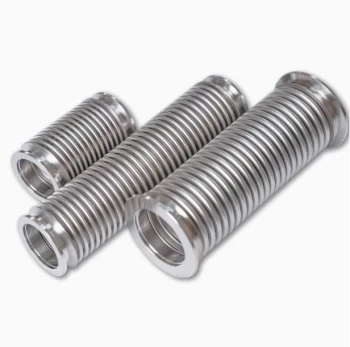
High Performance Vacuum Bellows for Efficient Connection and Stable Vacuum in Systems
KF ultra-high vacuum observation window with high borosilicate glass for clear viewing in demanding 10^-9 Torr environments. Durable 304 stainless steel flange.

CF KF Flange Vacuum Electrode Feedthrough Lead Sealing Assembly for Vacuum Systems
Reliable CF/KF flange vacuum electrode feedthrough for high-performance vacuum systems. Ensures superior sealing, conductivity & durability. Customizable options available.

Spark Plasma Sintering SPS Furnace
Discover KINTEK's advanced Spark Plasma Sintering (SPS) Furnace for rapid, precise material processing. Customizable solutions for research and production.
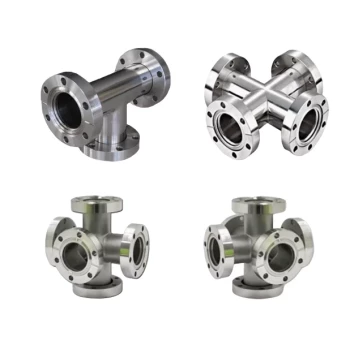
Ultra High Vacuum Stainless Steel KF ISO CF Flange Pipe Straight Pipe Tee Cross Fitting
KF/ISO/CF ultra-high vacuum stainless steel flange pipe systems for precision applications. Customizable, durable, and leak-tight. Get expert solutions now!
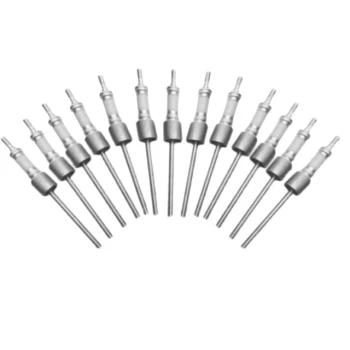
Ultra Vacuum Electrode Feedthrough Connector Flange Power Lead for High Precision Applications
Ultra-Vacuum Electrode Feedthroughs for reliable UHV connections. High-sealing, customizable flange options, ideal for semiconductor & space applications.
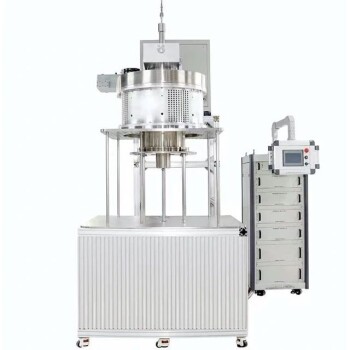
915MHz MPCVD Diamond Machine Microwave Plasma Chemical Vapor Deposition System Reactor
KINTEK MPCVD Diamond Machine: High-quality diamond synthesis with advanced MPCVD technology. Faster growth, superior purity, customizable options. Boost production now!
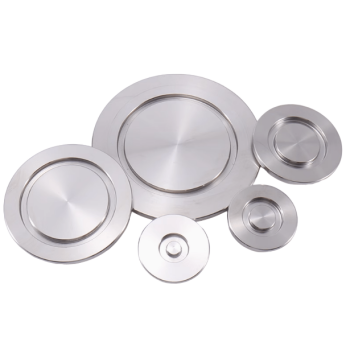
Stainless Steel KF ISO Vacuum Flange Blind Plate for High Vacuum Systems
Premium KF/ISO stainless steel vacuum blind plates for high-vacuum systems. Durable 304/316 SS, Viton/EPDM seals. KF & ISO connections. Get expert advice now!

HFCVD Machine System Equipment for Drawing Die Nano Diamond Coating
KINTEK's HFCVD system delivers high-quality nano-diamond coatings for wire drawing dies, enhancing durability with superior hardness and wear resistance. Explore precision solutions now!
Related Articles

Why Your High-Purity Metals Oxidize in a Perfect Vacuum—And How to Stop It
Frustrated by oxidized metals from your vacuum furnace? Discover the real culprit isn't the vacuum but the cooling phase, and how to fix it.

Why Your Vacuum Furnace Failed After the Lab Move—And How to Prevent It
Discover why vacuum furnaces often fail after being moved and how robust engineering prevents costly damage to seals and components. Protect your investment.

Why Your Sintered Parts Fail: It’s Not Just About Heat, But Pressure and Purity
Struggling with porous, weak, or contaminated sintered materials? Discover why simply raising the temperature isn't the answer and how the interplay of heat, pressure, and vacuum is the key.

Your Vacuum Furnace Is a System, Not a Component—Here’s Why That Changes Everything
Struggling with inconsistent high-temperature vacuum processes? Discover why a bigger pump isn't the answer and how an integrated system approach is key.

The Real Reason Your High-Performance Materials Are Failing (And It’s Not the Alloy)
Tired of inconsistent heat treatment? Discover the two invisible culprits sabotaging your materials and how a vacuum furnace provides the control to fix it for good.

Your Lab Furnace Is Burning Money. Here's the Hidden Design Flaw (And How to Fix It).
Discover the hidden design flaw making your lab furnace inefficient and costly. Learn how a system-level approach to design can cut energy waste.

How Vacuum Pressure Sintering Furnaces Elevate Material Performance Across Industries
Discover how vacuum pressure sintering furnaces enhance material performance with precision, purity, and industry-specific benefits across aerospace, medical, and automotive sectors.

How to Select the Right Vacuum Hot Pressing Furnace Temperature for Your Materials
Learn how to choose the right vacuum hot pressing furnace temperature for materials like ceramics, metals, and alloys. Optimize sintering with expert tips.

Beyond the Checklist: Why Your High-Temperature Furnace Fails (And How to Ensure It Won't)
Frustrated by failed heat treatments despite following safety rules? Discover the hidden physical reasons for failure and how intelligently designed furnaces ensure process reliability.

Beyond the Scrubber: Why Your Furnace Design is the Real Key to Environmental Compliance
Stop struggling with complex exhaust systems. Discover how the right furnace design inherently minimizes emissions and simplifies compliance.

Your Process is Perfect. Why Are Your Furnace Results Failing?
Discover the hidden reason your high-temperature furnace delivers inconsistent results and why "standard" features aren't enough for advanced applications.

Why Your High-Temperature Experiments Fail: It’s Not Bad Luck, It’s Your Furnace
Are inconsistent results from your high-temperature furnace derailing your research? Discover the hidden design flaws that cause failures and how to fix them for good.